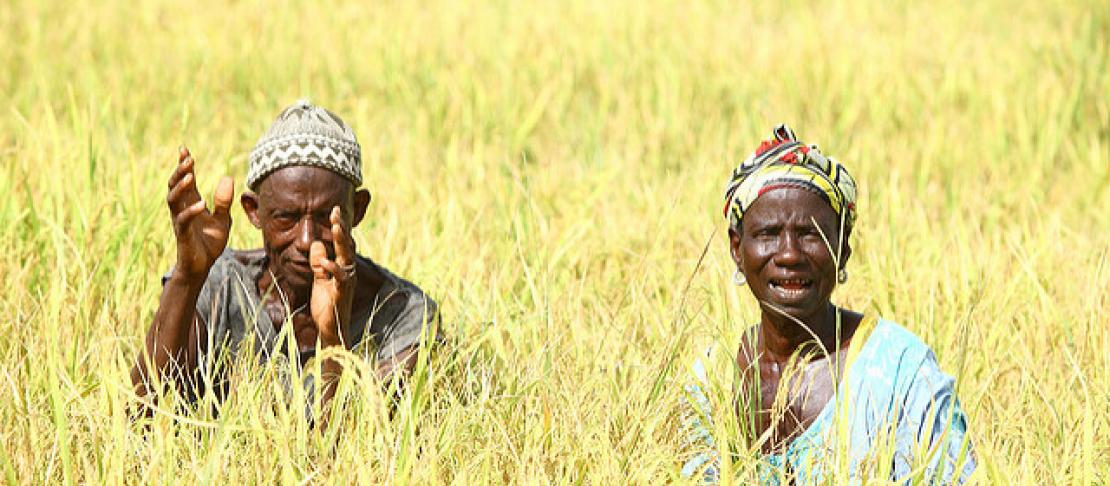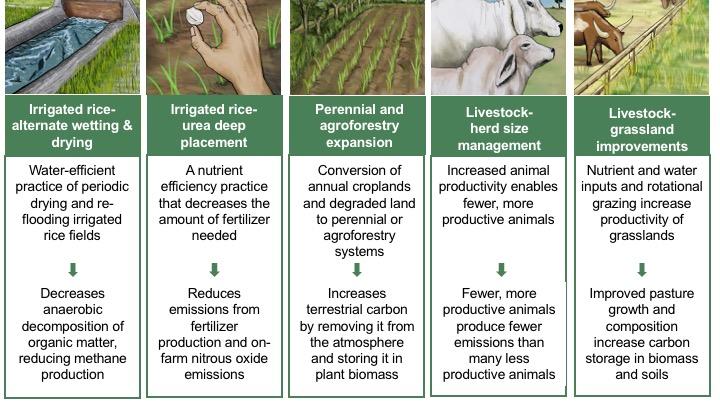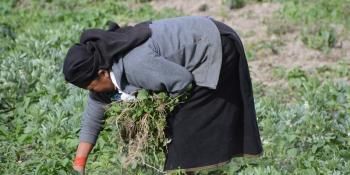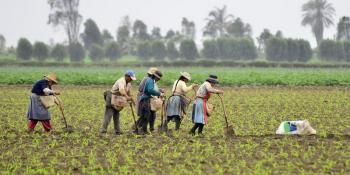Greenhouse gas emission analyses from nine agricultural development projects reveal mitigation options

Analyses show that some agricultural practices contribute to improved food security and climate change mitigation; practices adopted at large scales could contribute significantly to food and climate goals.
The 119 countries that committed to mitigate greenhouse gas emissions from agriculture in the Paris Agreement are developing implementation plans that include sub-sectoral goals and strategies. Recently published agricultural greenhouse gas emission analyses from nine tropical, developing countries can help prioritize agricultural practices that contribute to sustainable development goals in food security and climate.
Reseachers analyzed nine USAID agricultural projects and identified agricultural management practices in rice, agroforestry and livestock systems that increase production, provide climate change mitigation co-benefits and have potential for widespread adoption.
The analyses result from a collaborative effort of the CGIAR Research Program on Climate Change, Agriculture and Food Security (CCAFS), the Food and Agriculture Organization of the United Nations (FAO), and the United States Agency for International Development (USAID). They serve to improve understanding of how different agricultural management practices impact yields, net greenhouse gas emissions and emission intensity.
Agricultural practices with food security and climate benefits Irrigated rice
Irrigated rice
In alternate wetting and drying (AWD) farmers periodically dry their irrigated lowland rice fields.Because submerged soil leads to low-oxygen conditions, organic residue in flooded rice paddies decomposes anaerobically, releasing methane, a powerful greenhouse gas. Periodically drying the paddy interrupts this process and can reduce methane emissions by up to half as compared to continuous flooding. AWD also reduces water use by up to 30%, conserving water and the fuel required to pump it, often decreasing out-of-pocket costs for farmers.
Analyses revealed that although AWD delivers high climate change mitigation benefits per-area, barriers limit widespread adoption. The extent to which AWD can contribute to climate change mitigation and water conservation depends on identifying where and how to surmount these barriers. Read more on AWD in Bangladesh, Ghana and Haiti.
Urea deep placement (UDP) is a fertilizer management technology that improves nutrient use efficiency by placing urea briquettes into soil, instead of broadcasting urea granules on the surface of soil. Most often used in rice paddies, UDP reduces emissions of nitrous oxide and unintended nitrogen loss caused by volatilization of ammonia, surface runoff and nitrate leaching. UDP also decreases the amount of fertilizer needed compared to surface broadcasting.
While emission reductions per hectare from UDP are small, nitrogen uptake by plans - and thus health of plants - is large. The Accelerating Agriculture Productivity Improvement project in Bangladesh expected wide uptake of UDP and thus large emission reductions for the project. The project also found that farmers who use mechanization for UDP are more likely to adopt the practice, given the physical demands of manually placing briquettes.
Perennial crops and agroforestry
Perennial crops and agroforestry remove carbon from the atmosphere by storing carbon in plant biomass and soil. Improving landscape management by avoiding land degradation, replacing annual crops with perennial crops, installing agroforestry systems and better managing soil fertility convey climate change mitigation benefits by creating conditions in which plants and soil can store more carbon and/or reducing emissions associated with fertilizer.
Emission reductions potential varies by particular practice. Agroforestry projects need to consider which types of agroforestry systems make sense in the local context and pay careful attention to why farmers might or might not adopt and maintain trees in their fields. In Zambia, farmers adopted alley agroforestry systems (in which rows of perennial crops or trees are planted among annual crops) and experienced increased annual crop productivity while sequestering carbon. These farmers also had an added incentive to grow and maintain trees on their farms: the project connected them to consumer markets through a product label that offered premium prices to growers who complied with conservation standards, including practicing agroforestry.
Livestock
Herd size management strategies aim to increase productivity, enabling reduction of herd size while maintaining the level of production of the agricultural product, such as milk or meat for example. In general, a small but efficient herd increases productivity per animal and results in lower net greenhouse gas emissions.
A project in Kenya aimed to reduce total herd-size by 10% in two counties through quicker animal growth that allows slaughter at an earlier age. The project boosted producers’ access to inputs (feed and veterinary services), improved market links between livestock producers and buyers and increased the availability of timely market information for livestock producers. This herd-size management strategy was appropriate for Kenya; project developers must adapt strategies to the local context and assess whether incentives or changes to enabling conditions (e.g., insurance, financial services) are needed for a livestock producer to reduce herd size without facing production risks.
Grassland improvements are accomplished through managing the intensity and timing of grazing, planting or protecting species and/or adding nutrients and water to promote growth. Grassland improvements contribute to increased agricultural productivity and provide mitigation co-benefits by sequestering more carbon in soil and biomass.
A project in Ethiopia improved pasture quality and increased biomass and soil carbon sequestration by employing soil and water conservation measures, enclosing degraded pastures, selectively thinning bush and clearing the invasive plant Prosopis.
Access the case studies
- Accelerating Agriculture Productivity Improvement (AAPI) in Bangladesh: irrigated rice, soil and fertilizer management
- ACCESO in Honduras: perennial crops and agroforestry, livestock, soil and fertilizer management
- Agricultural Development and Value Chain Enhancement Activity (ADVANCE) II in Ghana: irrigated rice, soil and water management
- Better Life Alliance in Zambia: perennial crops and agroforestry, land use, soil and fertilizer management
- Chanjè Lavi Planté in Haiti: perennial crops and agroforestry, irrigated rice, land use, soil and fertilizer management
- Pastoralist Resiliency Improvement and Market Expansion (PRIME) in Ethiopia: livestock
- Peru Cacao Alliance in Peru: perennial crops and agroforestry, soil and fertilizer management
- Resilience & Economic Growth in Arid Lands - Accelerated Growth (REGAL-AG) in Kenya: livestock
- Rwanda Dairy Competitiveness Project in Rwanda: livestock
Read more
- USAID-CCAFS collaboration: Low emissions opportunities in agriculture: Supporting food security, economic growth and biodiversity conservation
- CCAFS project: Low emissions opportunities in USAID agriculture and food security initiatives
Climate Links published a related blog called Case Studies from Nine Countries Show Climate Change Mitigation Co-benefits from Agricultural Practices that Support Food Security on August 15, 2017.
Julianna White is Program Manager for CCAFS Low Emissions Development, based at the University of Vermont Gund Institute for Environment. Julie Nash was a scientist with CCAFS Low Emissions Development and the University of Vermont Gund Institute for Environment in 2016. She is now a Senior Manager in Food and Markets for Ceres, Inc.



